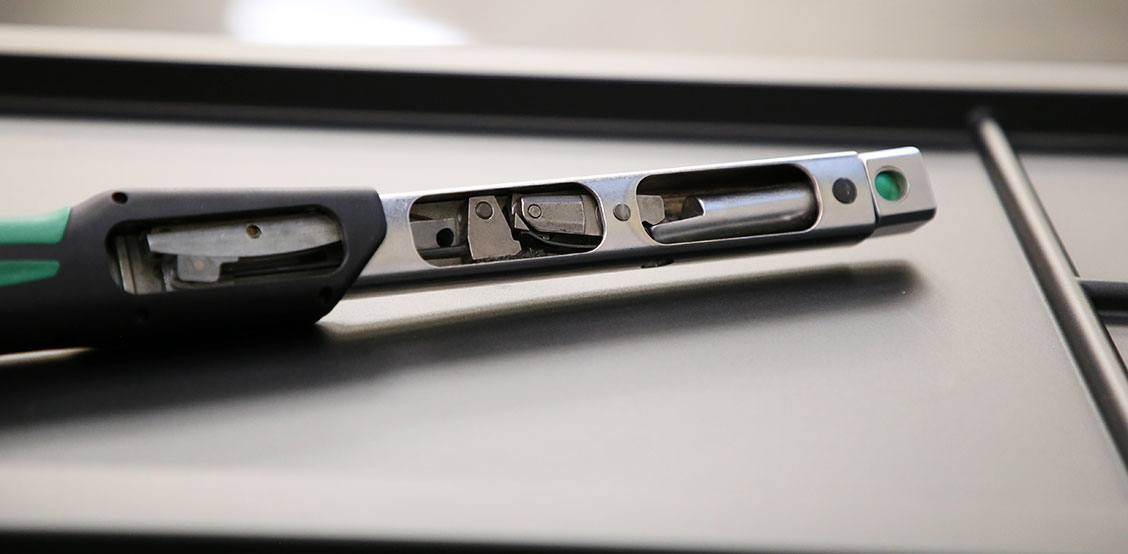Inhalt
01.
The click system with the triggering cam
Many mechanical click-type torque wrenches are fitted with a compression spring mechanism. For torque wrenches that use that mechanism, users should reset the torque wrench to »0«, or the smallest value that can be set, if the wrench is not to be used for a while. If it is not reset, there is a real danger that the compression spring will be deformed and this will result in incorrect measurement results.
However, there are also other »click« mechanisms, such as STAHLWILLE's system, which is designed not to use a spring as a measuring element, but is instead equipped with a flexible rod. This mechanism is only under load when the torque wrench is being used and is therefore virtually wear-free. The benefit for users is that it is not necessary to reset it to »0«, or the smallest value that can be set. This means the user saves valuable time and avoids an additional annoying step.
02.
How does this flexible rod system actually work?

Where the working load is zero, the flexible rod (1) is not preloaded. The user moves the setting slide (2) to modify the position of the counter-bearing – and in doing so changes the effective length of the lever arm and its preloading or resistance. The physical principle is therefore the same as with a wooden stick that you want to bend: if you position your hands near the middle of the stick, the lever is short, and the shorter the lever, the greater the resistance to be overcome and the force to be applied. If force is now applied to the torque wrench, the left-hand switching element (3) tilts downwards and applies force to the right-hand element (4), forcing it up. The corner of the element moving upwards contacts the corner of the triggering cam (5).
To overcome the resistance created by the flexible rod (1), a specific force will be necessary, which depends on the torque that has been set. As soon as this point has been reached, switching element (4) will be able to continue its travel upwards and will produce both an audible and a tactile signal. As soon as the user ceases to apply force, all the components automatically return to their unloaded positions – manual reset to »0« is not required.
- Flexible rod
- Setting slide
- Left-hand switching element
- Right-hand switching element
- Trigger cam
- Adjustment point/setscrew for the rated value
- Adjustment point/setscrew for the lowest value
Company
Service
2026© All Rights Reserved

